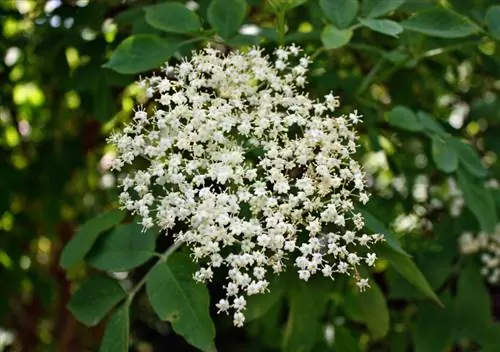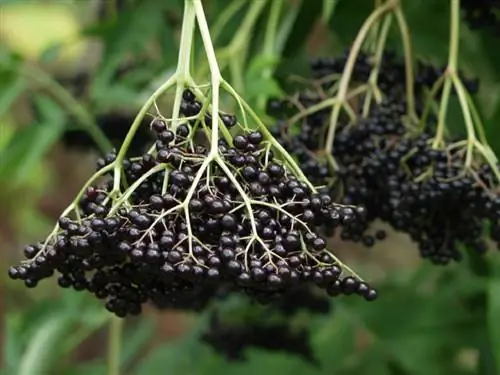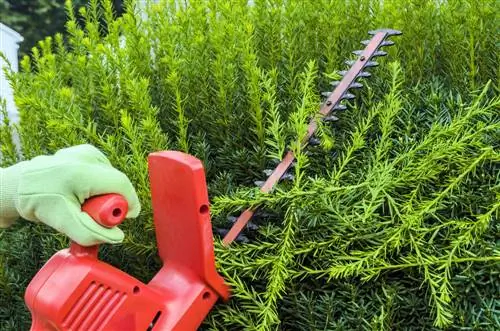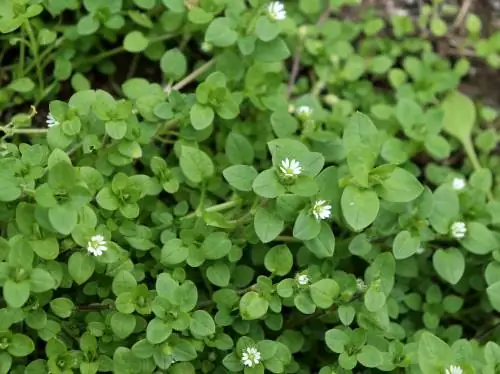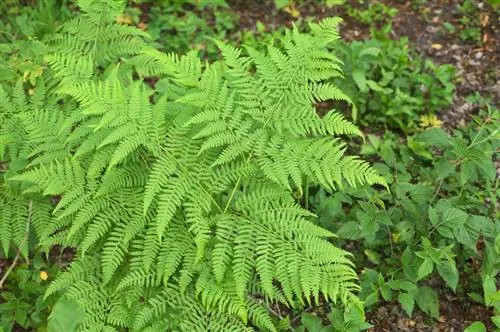- Author admin [email protected].
- Public 2023-12-16 16:46.
- Last modified 2025-01-23 11:20.
Within the elderberry genus there are some poisonous species that are easily confused with the edible black elderberry. You can find out what these are and which other plants there is a risk of confusion with here.
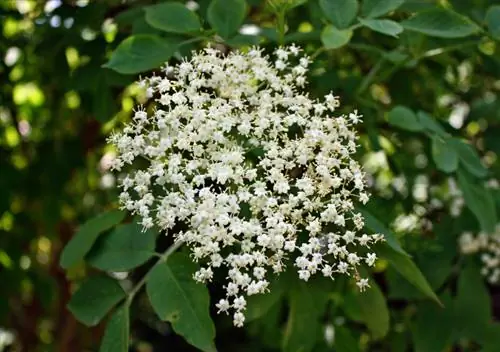
How do I recognize black elderberry?
You can recognize black elderberry by its 3-5 meter high branches, elliptical leaves, creamy white flowers and purple-black berries. Pay attention to differences from the poisonous dwarf elderberry, such as unpleasant smell, elongated leaflets and upward-facing berries.
Determine black elderberry reliably
The flowers, leaves and berries of the black elderberry can be used to conjure up delicious juices, liqueurs and jellies. Even though it is one of the most common shrubs in the wild, there are sometimes some poisonous conspecifics in between. You can determine which elderberry is edible based on the following characteristics:
- thrives as a shrub or small tree along the side of the path, in forest clearings and in hedges
- Growth height 3 to 5 meters with curved branches
- elliptical leaves with sawn edge
- 2 pairs each lying opposite each other and 1 leaf at the tip (opposite, imparipinnate)
- creamy white flowers from May to July
- purple-black berries in August and September, initially reddish in color
Differences determine the poisonous dwarf elderberry
The berries of the poisonous dwarf elderberry look very similar to the fruits of the black elderberry. You can distinguish between the two types using the following criteria:
- toxic parakeet spreads a very unpleasant smell
- its leaflets are elongated to lanceolate in shape and up to 15 centimeters long
- the poisonous dark berries point upwards, while the edible fruits of the black elderberry hang down
- Dwarf elderberries have a small dent
In addition, an attic tree with a maximum height of 150 centimeters remains significantly smaller than a fully grown black elderberry.
Keep your eyes open when collecting the flowers
Since the flowers of the black elderberry are often used in natural medicine, they are also often collected. Caution is advised, because at first glance the white elderflowers and the equally white flowers of the spotted hemlock are similar. In this case, a smell test provides reliable information about which plant you are actually dealing with. The spotted hemlock reveals itself by a foul stench.
Tips & Tricks
The berries of the red elderberry are also a delicious ingredient for jams, juices and liqueurs when cooked. However, the poisonous stone cores must be removed as their contents do not dissolve when cooked. Given the clear color difference, there is no risk of confusion between grape elderberry and poisonous elderberry species.

